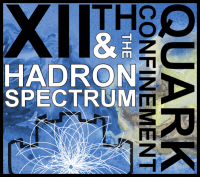Speaker
Description
Modern and future heavy-ion experiments are focused on measurements of very rare particles at interaction rates up to 10 MHz with data flow of up to 1 TB/s, that cannot be fully stored on currently available storage devices. The data flow should be reduced by selecting collisions with potentially interesting physics. Therefore, full reconstruction of the collision topology including reconstruction of short-lived particles is required already in real time with the experiment. The algorithms for online reconstruction should be fast, vectorized, parallelized, and portable in order to utilize the full potential of different many-core CPU/GPU computer architectures.
One of the most promising approaches to the search of particle trajectories (tracks) in the detector system is the Cellular Automaton (CA) track finder. The algorithm is based on consistent accumulation of the tracking information by building of short track segments, linking them according to the track model and selecting the best track candidates.
After tracks are found, they parameters are properly estimated within the Kalman Filter (KF) approach.
Next, short-lived particles are reconstructed covering signals from all physics cases: strange particles, strange resonances, hypernuclei, low mass vector mesons, charmonium, and open-charm particles.
All discussed algorithms are fully vectorized and parallelized and show a strong linear scalability on many-core architectures.




